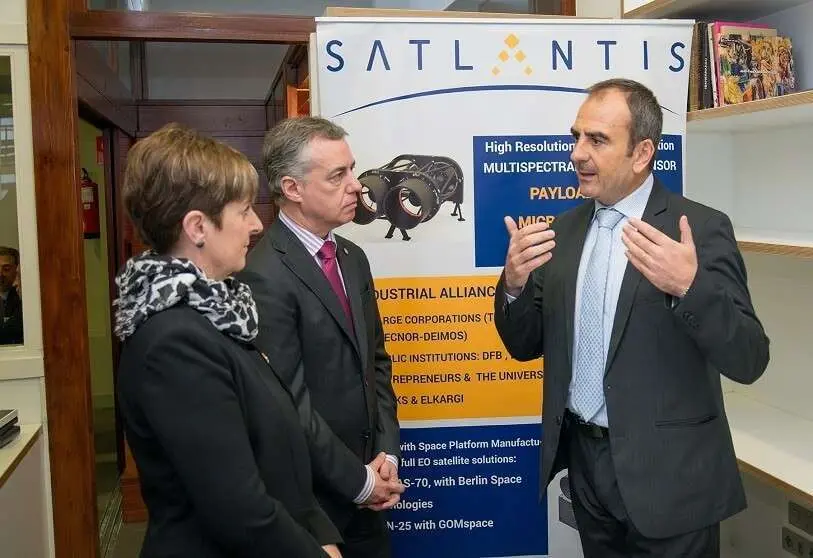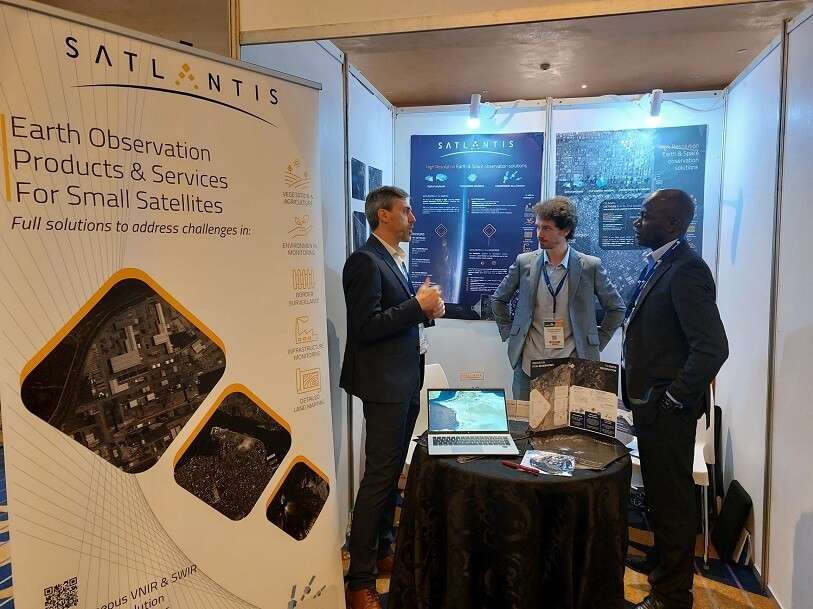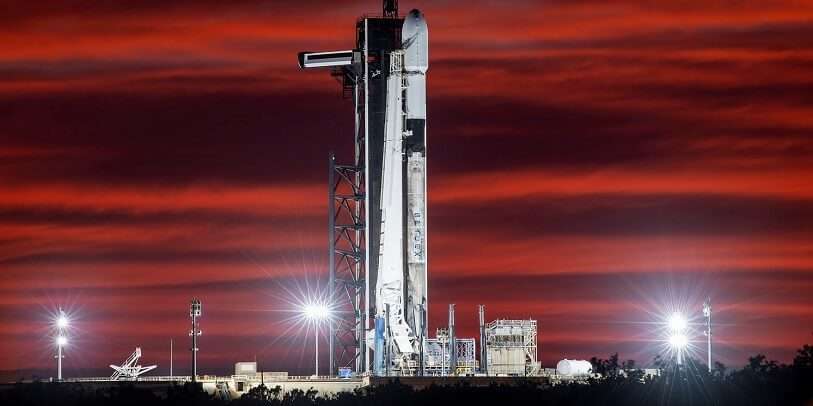Satlantis sends the friar who discovered the oceanic route from the Philippines to Spain into orbit

While the Ministry of Science and Innovation headed by Diana Morant moves at a snail's pace in the process of creating the Spanish Space Agency, Basque entrepreneur Juan Tomas Hernani continues his unstoppable personal commitment to turn Satlantis - the company he heads and of which he is founder - into a company of international reference dedicated to providing ultra-high resolution images of the Earth with cameras of very small dimensions and weights.
With four spacecraft projects in the pipeline, the first of them is already a reality. All tests and trials have been completed and the Spanish company's first complete satellite is housed atop a Falcon 9 launcher, along with dozens of other small satellites of many different nationalities and technologies.

The Falcon 9 rocket is already on the ramp of the SLC-40 launch complex at Cape Canaveral, on the Atlantic coast of the US state of Florida. At the closing of this edition, the atmospheric forecasts are 80% favourable for the launch window to open today, Wednesday 25 May, at 20:35 Spanish peninsular time.
If the take-off and ascent are successful, the satellite, christened Urdaneta, will be positioned at an altitude of 550 kilometres and will enter service in a few weeks' time. Controlled from Bilbao, it will send back images of the Earth's surface with a 26-kilometre-wide view, the processing of which will be used for agricultural planning, determining the health of crops, helping to differentiate between healthy and diseased plants and providing environmental information.

The size of a domestic microwave appliance - 40 x 20 x 20 centimetres - and weighing 15.5 kilos, its structure is made up of 16 cubes measuring 10 centimetres on each side, in accordance with the CubeSat 16U standard. With an estimated in-orbit lifetime of 4 years, Urdaneta has been manufactured and integrated in 15 months by Satlantis in Bilbao, at its facilities in the Science Park of the Loyola campus of the University of the Basque Country.
The main technology on board the platform is the iSIM-90 micro-camera, a powerful miniaturised multispectral binocular telescope developed by Satlantis, which offers four observation bands in the visible and near-infrared spectra. The end result will be images with a resolution of between 1.65 and 2 metres.

Founded in October 2013 in the United States and established in Spain shortly afterwards, Satlantis has a team of around 70 people, mostly optical and precision mechanical, electronic and software engineers. Urdaneta is the company's flagship project: "I studied at the Colegio de los Agustinos Andrés de Urdaneta in Bilbao", Hernani recalls, "and I wanted to pay tribute to the friar whose tenacity discovered the tornaviaje, the route back to Spain from the Philippines across the Pacific Ocean".
Headed by Juan Tomas Hernani, a part of its directors and technicians are at Cape Canaveral to ensure the integration of Urdaneta in the Falcon 9 dispenser that will place it in orbit and to witness its take-off. Another part is in Bonn (Germany), where the Living Planet 2022 Symposium, organised by the European Space Agency (ESA), is being held from 23 to 27 May, bringing together industrialists, scientists and researchers interested in the latest advances in Earth observation technologies.

To be launched over the next two years, Satlantis has a total of four space projects in various stages of implementation, with satellites weighing "from 15.5 to 100 kilos", says CEO Hernani. "This means," he points out, "manufacturing or participating fully in four satellites, being present in four launches and also in the four arduous administrative and financial contracting processes involved".

In addition to Urdaneta, the development of GeiSat, a constellation of three satellites that the Basque company is carrying out with the sponsorship of Enagás, its main shareholder, is at an advanced stage. With its equipment in the calibration phase, its deployment in space is aimed at detecting and quantifying methane gas emissions on Earth with great precision, with priority being given to gas and oil installations. The first device is planned to be launched into orbit in the summer of 2023.
Another initiative already underway is Urdaneta 2, a platform that will complement the one currently flying in space. And there is also the Mantis demonstration mission, in which ESA will evaluate a new Satlantis camera, also with very high resolution and improved performance, an initiative in which the United Kingdom Space Agency (UKSpace) and the British companies Terrabotics and Open Cosmos are participating.
Over the last few years, the company has raised 24 million euros in different funding rounds. Among its major shareholders are companies and institutions such as Enagás, Orza, Axis-Ico, Sepides, the Centre for the Development of Industrial Technology (CDTI), the Vizcaya Provincial Council and, just a few weeks ago, the US company Encino Environmental Holdings (EEH).

Before embarking on the construction and launch of what will be his first complete satellite (Urdaneta), Juan Tomas Hernani tested his technology. In 2020, he obtained the cooperation of the Japan Aerospace Exploration Agency (JAXA) to take his high-resolution micro-camera iSIM-170, which won a JAXA award, to the International Space Station. In 2021, it won support from the US Department of Defence and NASA to evaluate the newer iSIM-90 in orbit.









